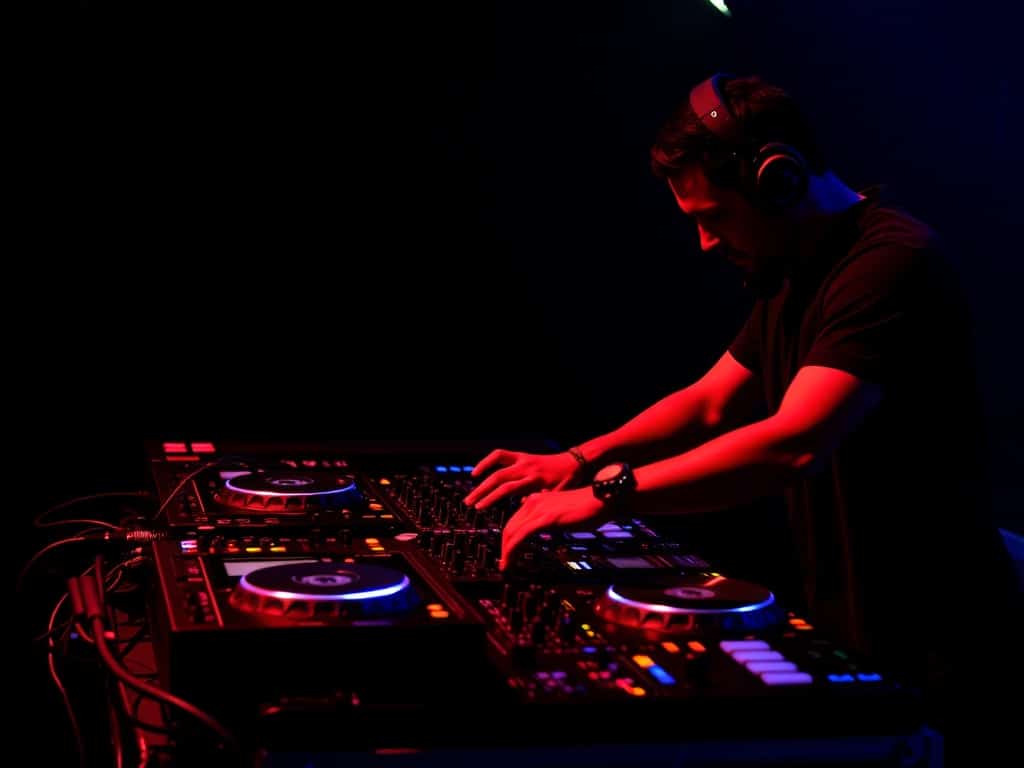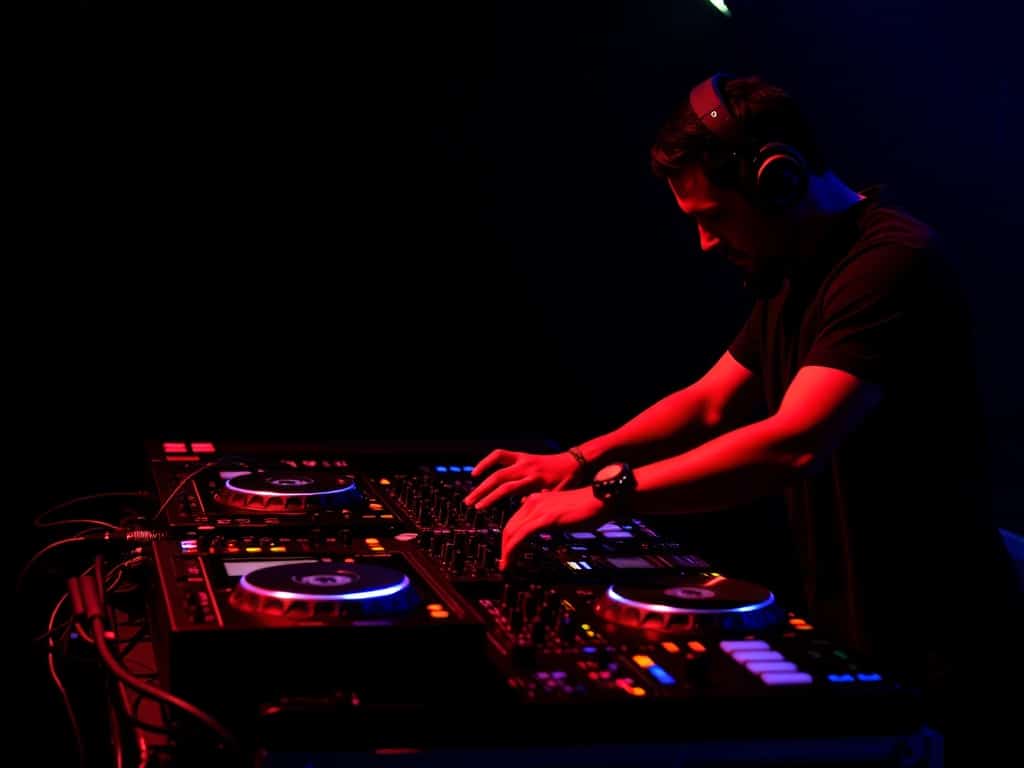Unleash Your Inner DJ: Killer Performance Tips for Beginners of All Ages
Ever dreamed of commanding a crowd, seamlessly weaving together sounds that make people move? The world of DJing is calling, and it's more accessible than you think! Whether you're a fresh-faced 10-year-old with a passion for beats or a seasoned 75-year-old ready to embrace a new challenge, this guide is your launchpad. We'll break down everything from essential equipment to advanced mixing techniques, ensuring you're spinning like a pro in no time. Get ready to unleash your inner DJ!
Gearing Up: What Equipment Do You Need?
Don't let the array of DJ gear intimidate you. You don't need a massive investment to start. Here's a breakdown of the essentials:
- DJ Controller: This is your command center! It emulates turntables and a mixer, all in one device. Entry-level controllers are surprisingly affordable and user-friendly.
- DJ Software: Software like Serato DJ Lite (often included with controllers), Traktor DJ, or Rekordbox, is vital. This software manages your music library and allows you to control the music through your controller.
- Headphones: Crucial for cueing up tracks and beatmatching without the audience hearing. Look for closed-back headphones that offer good sound isolation.
- Speakers: While you can practice with headphones, you'll need speakers to share your mixes with the world (or at least your living room). Powered studio monitors offer accurate sound reproduction.
- Laptop or Computer: Most DJ software requires a laptop or desktop computer to run.
Pro Tip: Start simple. As your skills grow, you can upgrade your equipment. Focus on mastering the basics first!
Curating Your Sound: Choosing Music for Your DJ Sets
Music selection is the heart and soul of DJing. Your goal is to create a journey for the listener, taking them through a range of emotions and energies. But how do you choose the right tracks?
- Know Your Audience: Are you playing for a dance club, a wedding, or a casual gathering? Tailor your music to the event and the people you're playing for.
- Genre Exploration: Don't limit yourself! Explore different genres that complement each other. A seamless blend of house and disco can be a crowd-pleaser.
- Build a Diverse Library: Variety is key. Include both popular tracks and hidden gems to keep your sets fresh and engaging.
- Listen Actively: Pay attention to the energy, rhythm, and overall vibe of each track. Imagine how it will sound when mixed with other songs.
Mixing 101: Fundamental DJ Techniques
Now for the fun part! Here are some essential mixing techniques to get you started:
- Beatmatching: Aligning the tempos (beats per minute or BPM) of two tracks so they play in sync. (More on this later!).
- Mixing in Key: Choose songs which are in compatible musical keys.
- Crossfading: Smoothly transitioning between tracks using the crossfader on your controller or mixer.
- EQing: Adjusting the bass, mids, and highs of each track to create a balanced sound and avoid clashing frequencies.
- Phrasing and Structure: Understanding the arrangement of a song to know when it's best to start the next track.
Developing Your DJ Style and Consistency
Consistency and a recognizable style will help you go far. It's more than just playing music; it's about crafting an experience.
- Find your niche: What kind of music are you most passionate about? What kind of atmosphere do you want to create?
- Practice, practice, practice: The more you mix, the more intuitive it will become.
- Record your sets: Listen back to identify areas for improvement and refine your style.
- Find your influences: Listen to different styles of music from lots of DJs and artists.
Where to Find Your Tracks: Building Your Music Library
Building a solid music library is crucial to a good DJ set. There are various locations to get your music:
- Digital Music Stores Services like iTunes, Beatport, and Traxsource offer high-quality downloads.
- Streaming Services: Some DJs use streaming services like Tidal or SoundCloud Go+ for access to a vast library, but make sure your DJ software supports it.
- Record Pools: Subscription-based services that provide DJs with a steady stream of new music, often including edits and remixes tailored for DJing.
Analyze That Sound: Understanding Your Music
DJ software can assist in managing music and will track some key metrics.
- Tempo (BPM): Beats per minute. Essential for beatmatching.
- Key: The Key signature of the song will help with smooth transitions.
- Genre: Categorizing your music by genre makes it easier to find the right track for the moment.
Building Your Arsenal: Assembling Your DJ Library
Tips to help you build your DJ library:
- Organization: Create folders for different genres, moods, or events and use playlists.
- Backups: Protect your music in case of computer failure.
- Curation: Constantly add new music and remove tracks that no longer fit your style.
Smooth Operator: Seamless Transitions
Transitions make or break a DJ set. Here's how to master the art of blending tracks:
- Quick Mixes: Changing songs at a key moment allows the music, excitement, and mood to remain strong.
- Using Effects: Introduce effects that create movement of the music, like delays, echos and filters.
- Long Blends: Gradually transition between two tracks, building anticipation and creating a seamless flow.
Phrase Matching
Phrasing is key to smooth transitions. Most electronic music is structured in phrases of 4, 8, 16, or 32 beats. By starting your transition at the beginning of a phrase, you'll create a more musical and natural-sounding mix.
Mastering the Beat and Tempo
Beatmatching and tempo syncing are two of the most important skills a DJ can learn. Beatmatching is the process of manually adjusting the tempos of two tracks so that they are playing on time with each other. Tempo syncing is a feature on some DJ controllers and software that automatically matches the tempos of two tracks. With practice and dedication, a beginner DJ can master the art of beatmatching and tempo syncing.
Staying Grounded: Humility in the DJ Booth

Remember, you're there to serve the music and the audience, not your ego.
- Listen to Feedback: Pay attention to the crowd's reaction and adjust your set accordingly.
- Give Credit: Acknowledge the artists whose music you're playing.
- Stay Humble: Don't let success go to your head. Always be learning and improving.
Troubleshooting: Fixing Common DJ Problems
Even experienced DJs encounter problems. Here are a few common issues and how to fix them:
- Technical Issues: Sound cutting out, software crashing. Have backup equipment and music ready.
- Track Mismatch: Two songs simply don't blend well. Transition quickly to another track.
- Dead Crowd: Try a different genre, increase the energy, or interact with the audience.
Practice Makes Perfect
The best way to improve your DJing is by practicing regularly. This can be at home, in a studio, or even at a friend's house.
Self Promotion
Once you've got the DJ basics down, it's time to promote yourself. Here are some ideas:
- Create a social media presence. Share mixes, promote gigs, and engage with your audience.
- Make a website. A website is a great place to showcase your work and provide information about your services.
- Network with other DJs and promoters. Getting to know people in the industry can help you get gigs and build your career.
Can I Learn How To Scratch?
Absolutely. Scratching the record adds a cool and unique sound to your performance.
Play Live
Playing live sets will allow you to perfect your craft. Playing songs live will allow you to build you confidence, and give you real-time feedback to refine your DJ skills.
What if I Make Mistakes?
It's okay to make mistakes, it happens to the best of us. As long as you are having a good time, remain humble and improve based on your mistakes, you will only keep getting better.
Reading the Crowd
A good DJ must be able to read the crowd and select music that will appeal to them. So it's important to choose the right music at the right time. Observe their reactions to different songs and adjust your set accordingly.
Lighting and Effects
DJ lighting and effects can add to the atmosphere of your performance. There are many different types of lighting and effects available, so experiment with different options to find what works best for you.
Legal Issues
Copyright laws protect musical works, and DJs need to be aware of these laws. Obtain the appropriate licences for your music to avoid potential legal issues. You can use royalty-free music, buy licenses or use streaming services.
The Journey Begins Now!
DJing is a journey of constant learning and growth. Embrace the challenge, experiment with new techniques, and never stop exploring the world of music. With passion, dedication, and these DJ performance tips, you'll be well on your way to unleashing your inner DJ and creating unforgettable experiences for yourself and your audience. Now go out there and make some noise!

